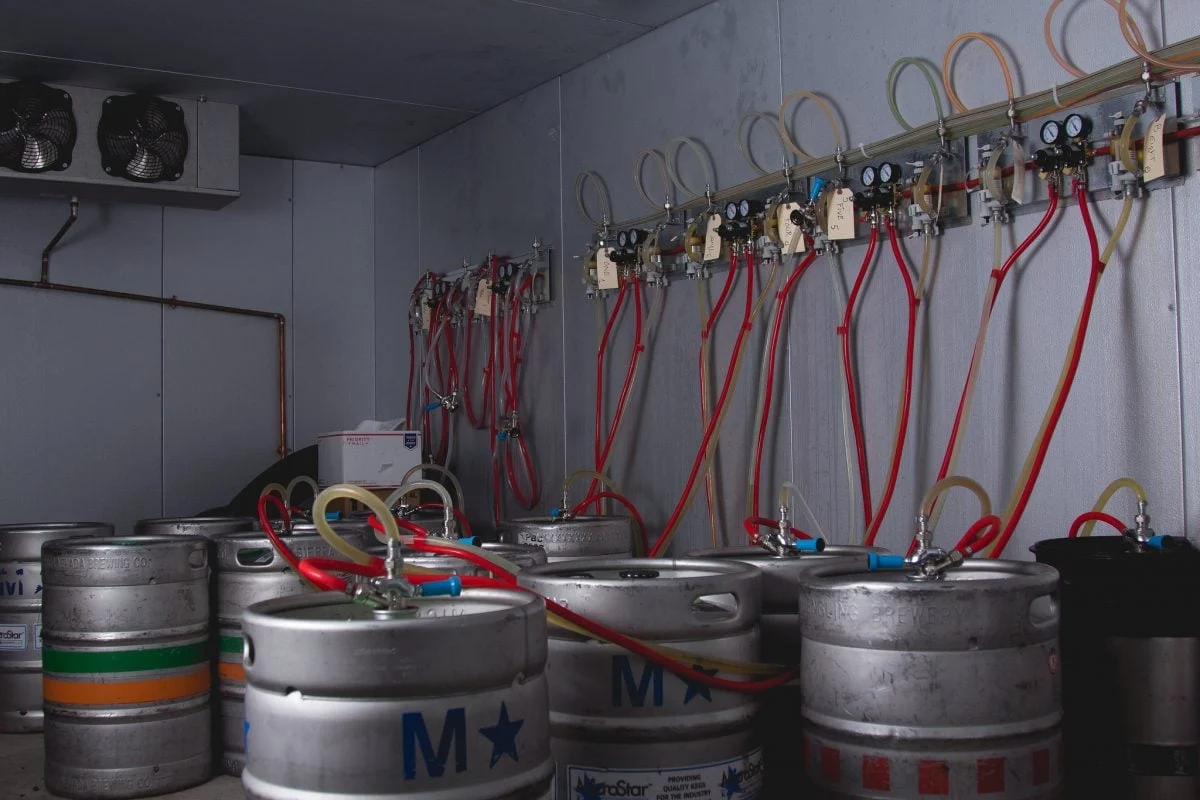

Articles
How Many Kegs Fit In A Kegerator
Modified: September 2, 2024
Looking for articles on how many kegs can fit in a kegerator? Find all the information you need about kegerator capacity and more in our comprehensive guide.
(Many of the links in this article redirect to a specific reviewed product. Your purchase of these products through affiliate links helps to generate commission for Storables.com, at no extra cost. Learn more)
Introduction
Welcome to the world of kegerators, where your favorite beverage is always on tap! If you’re a beer enthusiast or love hosting parties, a kegerator is a must-have appliance that combines convenience and enjoyment. But you may be wondering, how many kegs can a kegerator hold? That’s what we’re here to explore.
A kegerator is essentially a refrigerator designed to store and dispense kegs of beer. It’s like having your own personal bar at home, allowing you to enjoy draft beer anytime you want without the need for bottles or cans. Not only does it save you the hassle of constantly restocking your fridge, but it also adds a touch of sophistication to your entertainment space.
Now, you might be wondering why you should invest in a kegerator instead of simply buying bottled or canned beer. Well, there are several benefits to having a kegerator that go beyond the convenience of having beer on tap.
Firstly, having draft beer means you can enjoy your favorite brew at its freshest. Keg beer is not subjected to the same level of oxidation as bottled or canned beer, which can diminish its taste and quality. With a kegerator, you get to experience the true flavors and aromas of your favorite beer, just as the brewer intended.
Secondly, a kegerator is more cost-effective in the long run. While the upfront cost may seem significant, it’s actually a wise investment if you consume a considerable amount of beer. Buying kegs in bulk is usually cheaper per ounce compared to buying individual bottles or cans. Plus, you eliminate the need for constant recycling or disposal of beer packaging, making it an environmentally friendly choice.
Now let’s dive into the main question: how many kegs can a kegerator hold? The answer to this depends on several factors, including the size of the kegerator, the type of kegs you’re using, and any additional equipment or modifications you have in place.
Key Takeaways:
- Enjoy fresh, flavorful beer with a kegerator, saving money in the long run and adding convenience and sophistication to your home. Choose the right size and type to cater to your beer-drinking needs.
- Consider factors such as kegerator size, keg compatibility, and additional features when selecting a kegerator. Understand standard keg sizes and additional considerations to ensure a seamless integration into your space.
Read more: What Size Keg Fits In Kegerator
What is a Kegerator?
A kegerator is a specialized appliance that combines the functionality of a refrigerator with a draft beer dispensing system. It is specifically designed to store, cool, and dispense kegs of beer, providing you with the luxury of having fresh draft beer right at your fingertips.
At its core, a kegerator consists of two main components: a refrigerator and a draft tower or faucet system. The refrigerator compartment is where the kegs are stored and cooled, maintaining their temperature at an optimal level for serving. The draft tower or faucet system is where the beer is dispensed, allowing you to pour a perfectly chilled and carbonated glass of beer with just a simple pull of a lever.
Most kegerators also include additional features to enhance the overall experience. These can include temperature control options, CO2 or nitrogen tanks for carbonation, pressure regulators, and drip trays to catch any spills. Some advanced models even come with built-in digital displays and keg monitoring systems, allowing you to keep track of important details such as temperature and remaining beer levels.
In terms of appearance, kegerators come in various sizes and styles to suit different needs and preferences. They can range from compact countertop models that can hold mini kegs, to full-sized freestanding units that can accommodate multiple full-sized kegs. Some kegerators are built into custom bars or kitchen islands, creating a stylish and seamless integration.
While kegerators are predominantly used for beer, they can also be used to store and serve other carbonated beverages such as soda, sparkling water, or kombucha. This versatility allows you to cater to different preferences and ensures that everyone can enjoy a refreshing drink of their choice.
Overall, a kegerator is more than just a refrigerator. It’s a specialized appliance that brings the joy of having draft beer on tap into the comfort of your home or commercial space. Whether you’re a passionate beer lover or enjoy hosting parties and gatherings, a kegerator is a fantastic addition that elevates your drinking experience to a whole new level.
Benefits of Having a Kegerator
Investing in a kegerator offers a multitude of benefits that elevate your beer-drinking experience and enhance your hosting capabilities. Here are some of the key advantages of having a kegerator:
- Fresh and Flavorful Beer: One of the most significant benefits of a kegerator is the ability to enjoy fresh and flavorful beer. Keg beer is not subjected to the same level of oxidation as bottled or canned beer, preserving its taste and quality. With a kegerator, you can pour a pint of beer with perfect carbonation and temperature every time.
- Cost Savings: While the upfront cost of a kegerator may seem significant, it can save you money in the long run. Buying kegs in bulk is generally more cost-effective per ounce compared to buying individual bottles or cans. Additionally, you eliminate the need for constant recycling or disposal of beer packaging, making it an environmentally friendly and cost-efficient choice.
- Convenience and Accessibility: With a kegerator, you have the luxury of having your favorite beer on tap right in your own home. No more running to the store or worrying about running out of beer. It’s as simple as pulling the tap handle and enjoying a fresh pint anytime you want. It’s a convenient solution for beer enthusiasts and frequent entertainers.
- Greater Variety: Owning a kegerator opens up a world of possibilities when it comes to beer selection. You can experiment and rotate different types and flavors of beer without the commitment of buying a whole case or six-pack. Whether it’s a hoppy IPA, a smooth stout, or a refreshing lager, you have the freedom to enjoy a wide variety of beers at your leisure.
- Customizable Experience: A kegerator allows you to customize your beer-drinking experience to suit your preferences. You can adjust the temperature and carbonation levels to match the specific requirements of each beer style. Some kegerators even offer the option to add flavor infusers, allowing you to create unique and personalized beer blends.
- Ideal for Entertaining: Hosting a gathering or party becomes a breeze with a kegerator. It becomes a focal point and a conversation starter, creating a fun and interactive experience for your guests. You can serve perfectly poured pints of beer, and with the option to dispense multiple kegs at once, you can accommodate a variety of beer preferences and cater to a larger crowd.
A kegerator is more than just a beer dispensing appliance; it offers a range of benefits that enhance your enjoyment, savings, and hosting capabilities. From the freshest beer to the ability to customize your experience, a kegerator is a practical and enjoyable addition to any beer lover’s home or commercial space.
How Many Kegs Can a Kegerator Hold?
The number of kegs a kegerator can hold depends on several factors, including the size and configuration of the kegerator, the type of kegs being used, and any additional modifications or equipment in place.
Standard kegerators come in various sizes, ranging from compact countertop models to full-sized freestanding units. The size of the kegerator will largely determine its capacity to hold kegs. As a general guideline, a full-sized kegerator can typically hold one or more full-sized kegs, while smaller models may only accommodate mini kegs or a single full-sized keg.
Another factor to consider is the type of kegs you plan to use. There are different types of kegs available, such as quarter-barrel, half-barrel, or sixth-barrel kegs, each with varying sizes and dimensions. The kegerator’s capacity may be specified based on a particular keg size, so it’s important to match the keg size to the kegerator’s specifications.
It’s worth noting that kegerators can sometimes accommodate multiple kegs by stacking them vertically or utilizing additional shelving. This allows you to have a variety of beers on tap at the same time, catering to different preferences and adding a touch of versatility to your beer selection.
In addition to the basic kegerator setup, there are modifications available that can increase the number of kegs a kegerator can hold. For example, some kegerators have the option to add a double or triple tap system, which allows you to dispense beer from multiple kegs simultaneously. This expansion in the number of taps enables you to serve different beers without the need for additional refrigeration or storage space.
It’s important to consider your specific needs and requirements when choosing a kegerator. If you’re a casual beer drinker or have limited space, a smaller kegerator that holds one keg may suffice. However, if you frequently host parties or have a larger gathering space, investing in a kegerator with multi-keg capacity or the ability to add additional taps can add convenience and flexibility to your setup.
Ultimately, the number of kegs a kegerator can hold depends on its size, configuration, and any modifications in place. By carefully selecting the kegerator that best fits your needs, you can ensure that you have an ample supply of fresh, delicious draft beer ready to be enjoyed whenever the occasion calls for it.
Factors Affecting the Number of Kegs
Several factors can influence the number of kegs a kegerator can hold. Understanding these factors is crucial when determining the capacity that will best suit your needs. Here are some key factors to consider:
- Kegerator Size: The size of the kegerator is one of the primary factors affecting its keg capacity. Larger kegerators generally have more space available and can hold multiple full-sized kegs. Compact or countertop models, on the other hand, may only accommodate mini kegs or a single full-sized keg.
- Keg Size: Different keg sizes exist, such as quarter-barrel, half-barrel, or sixth-barrel kegs. The keg size must match the capacity of the kegerator. For example, a full-sized kegerator can typically hold a half-barrel keg, while smaller kegerators might be suitable for sixth-barrel or mini kegs.
- Additional Shelving or Stacking: Some kegerators offer the flexibility to add additional shelving or stack kegs vertically. This allows for efficient utilization of the available space and can increase the number of kegs the kegerator can hold. However, it’s important to ensure that the kegs are stored and stacked safely to avoid any damage.
- Tap System Configuration: The configuration of the tap system can also impact the number of kegs a kegerator can hold. Some kegerators come with dual or triple tap setups, allowing for the dispensing of multiple beers simultaneously. This eliminates the need for separate kegerators for each type of beer and maximizes the variety of beers available.
- Additional Equipment or Modifications: Certain modifications or additional equipment can expand the capacity of a kegerator. For example, a kegerator with a keg stacking kit can hold two kegs vertically, increasing its capacity. Similarly, a kegerator with an external CO2 tank can free up internal space, allowing for the placement of more kegs.
- Space for CO2 or Nitrogen Tanks: The presence of a dedicated space for CO2 or nitrogen tanks can also affect the number of kegs a kegerator can hold. Some kegerators feature separate compartments or mounting options for gas tanks, ensuring they don’t occupy valuable keg storage space.
Ultimately, the number of kegs a kegerator can hold is influenced by various factors, including the size of the kegerator, the type of kegs being used, any additional shelving or modifications, and the configuration of the tap system. It’s important to consider these factors and choose a kegerator that aligns with your needs and preferences, enabling you to enjoy your favorite beers on tap without compromising on capacity or functionality.
Read more: How Many Kegs Fit In Micro Matic Kegerator
Standard Keg Sizes
When it comes to kegs, there are several standard sizes that you should be aware of when determining the capacity of your kegerator. The most common keg sizes include:
- Quarter Barrel Keg (Pony Keg): A quarter barrel keg, also known as a pony keg, holds approximately 7.75 gallons or 29 liters of beer. This size is equivalent to a quarter of a full-sized barrel keg, hence the name. A quarter barrel keg typically contains around 82 twelve-ounce servings of beer.
- Half Barrel (Full-Size) Keg: The half barrel keg is one of the most popular keg sizes and is commonly used in commercial settings. It holds around 15.5 gallons or 58.67 liters of beer, which is equivalent to approximately 165 twelve-ounce servings. Full-size kegs are often used for large gatherings or events.
- Sixth Barrel Keg (Slim Quarter): The sixth barrel keg, also known as a slim quarter keg, is a smaller option that holds around 5.16 gallons or 19.5 liters of beer. It contains approximately 56 twelve-ounce servings and is often preferred for smaller gatherings or home use where a full-size keg may be too large or impractical.
- Cornelius Keg (Corny Keg): Cornelius kegs, also referred to as corny kegs, are popular among homebrewers and craft beer enthusiasts. These kegs come in various sizes, including 2.5 gallons, 3 gallons, and 5 gallons. They are compact and suitable for smaller quantities of beer or experimental brews.
- Mini Keg: Mini kegs are the smallest keg option available and typically hold around 1.3 gallons or 5 liters of beer. These kegs are commonly used for personal use or small gatherings. They are portable and great for situations where you want to enjoy draft beer without the need for a full-sized kegerator.
It’s important to note that while these are the standard keg sizes, variations in dimensions may exist among different brands or regions. It’s always advisable to check the specific dimensions of the keg and compare them to the available space in your kegerator to ensure a proper fit.
The keg size you choose will depend on your consumption needs, available storage space, and the capacity of your kegerator. Whether you opt for a full-size keg for a large gathering or a smaller size for personal use, understanding the standard keg sizes will help you make an informed decision and ensure a seamless integration with your kegerator setup.
Mini Kegerators vs. Full-Sized Kegerators
When it comes to kegerators, there are two main options to consider: mini kegerators and full-sized kegerators. Each has its own advantages and considerations, depending on your specific needs and preferences. Let’s take a closer look at the differences between these two types of kegerators:
Mini Kegerators
Mini kegerators are compact and portable units designed to hold and dispense smaller kegs, typically ranging from 1.3 gallons to 5 liters in size. Here are some key features and benefits of mini kegerators:
- Size and Portability: Mini kegerators are significantly smaller and more lightweight than full-sized kegerators. They are designed for personal use or small gatherings, making them ideal for apartments, dorm rooms, or outdoor events. Their portability allows you to enjoy draft beer without the need for a permanent installation.
- Ease of Use: Mini kegerators are relatively easy to set up and operate. They often come with a compact CO2 or air pump system that helps carbonate and dispense the beer directly from the keg. Some models even have built-in taps for convenient pouring.
- Keg Selection: Mini kegerators are compatible with specific types of mini kegs, commonly found in 1.3-gallon or 5-liter sizes. These kegs are typically available for popular commercial beers or craft brews. However, the range of available beer options may be more limited compared to full-sized kegerators.
- Capacity: Due to their smaller size, mini kegerators can hold only one mini keg at a time. This limited capacity makes them more suitable for personal use or gatherings with a small number of guests.
Full-Sized Kegerators
Full-sized kegerators are larger units that can hold standard-sized kegs, typically ranging from quarter barrels to half barrels. Here are some key features and benefits of full-sized kegerators:
- Capacity: Full-sized kegerators have a significantly larger capacity compared to mini kegerators. They can hold one or more full-sized kegs, allowing for a greater variety of beers on tap at any given time. This makes them ideal for larger gatherings, commercial use, or for beer enthusiasts who enjoy a wide selection of brews.
- Versatility: Full-sized kegerators offer greater versatility in terms of keg selection. They can accommodate various keg sizes, including quarter barrels, half barrels, and sixth barrels, giving you more options when it comes to the types and styles of beer you can enjoy.
- Customization Options: Full-sized kegerators often come with additional features and customization options. These can include temperature control, multiple tap systems, digital displays, and built-in keg monitoring. These features allow for more precise control over the beer-serving experience and enhance the overall functionality of the kegerator.
- Commercial Use: Full-sized kegerators are commonly used in commercial settings such as bars, restaurants, or breweries. They are designed to withstand continuous use and provide efficient beer dispensing for a larger customer base.
Choosing between a mini kegerator and a full-sized kegerator depends on your specific requirements and preferences. If you have limited space, prefer portability, and will mainly be using it for personal use or small gatherings, a mini kegerator may be the more suitable option. On the other hand, if you have ample space, want to cater to a larger crowd, and desire a wider range of beer options, a full-sized kegerator would be a better fit.
Ultimately, both options provide the convenience and enjoyment of having draft beer at your fingertips. Whichever type of kegerator you choose, it will undoubtedly elevate your beer-drinking experience and delight your guests.
Read more: What Size Keg Will Fit In 4.5 Cf Kegerator
Additional Considerations
When deciding on a kegerator, there are a few additional factors to consider that can help you make the best choice for your needs. These considerations can further enhance your kegerator experience and ensure that you select a model that meets your specific requirements. Here are some important points to keep in mind:
Installation and Space Requirements:
Before purchasing a kegerator, it’s essential to assess the available space in your home or commercial area. Consider the dimensions of the kegerator, including its width, depth, and height, to ensure it fits comfortably in your desired location. Additionally, pay attention to any installation requirements, such as ventilation or clearance space, to guarantee proper operation and prevent any potential damage or safety hazards.
Temperature Control and Energy Efficiency:
Temperature control is crucial in maintaining the quality and taste of your beer. Look for kegerators that offer a range of temperature options and efficient cooling systems. The ability to adjust and monitor the internal temperature ensures that your beer is always chilled to perfection. Energy efficiency is also worth considering, as some kegerators are designed to consume less power, helping to reduce energy costs over time.
Maintenance and Cleaning:
Regular maintenance and cleaning are essential for the longevity and hygiene of your kegerator. Consider models that are easy to clean, with removable drip trays and keg holders, as this simplifies the maintenance process. Look for kegerators with accessible components and clear instructions for cleaning and troubleshooting to ensure hassle-free operation and maximum product lifespan.
Read more: How Many 1/6Th Kegs In A 90 Inch Kegerator
Price and Budget:
Kegerators come in a wide range of prices, so it’s important to establish a budget before making a purchase. Consider what features and specifications are key to you, and weigh them against the price tag. While it’s tempting to opt for the most affordable option, keep in mind that investing in a quality kegerator can provide a more satisfactory and long-lasting experience.
Brand Reputation and Reviews:
Research the reputation of the brand or manufacturer before finalizing your decision. Look for customer reviews and ratings to gain insights into the reliability, performance, and customer satisfaction of the kegerator you’re considering. A reputable brand with positive reviews indicates a higher chance of a superior product and better customer support.
Warranty and Customer Support:
Consider the warranty offered by the manufacturer for the kegerator, as it provides peace of mind and protection against any potential defects or malfunctions. Additionally, evaluate the level of customer support provided by the brand, as responsive and helpful customer service can greatly assist in resolving any issues or inquiries that may arise.
By considering these additional factors, you can ensure that your chosen kegerator meets your specific requirements, provides an optimal beer-drinking experience, and offers long-term satisfaction. Take the time to research and compare different models to find the perfect kegerator that fits your needs and preferences.
Conclusion
A kegerator is the ultimate appliance for beer enthusiasts and those who love to entertain. With its ability to store and dispense kegs of beer, it brings the experience of having fresh draft beer right into the comfort of your home or commercial space. Throughout this article, we’ve explored the various aspects of kegerators, from understanding what they are to determining how many kegs they can hold.
Having a kegerator offers numerous benefits, including the ability to enjoy fresh and flavorful beer, cost savings in the long run, convenience, and a greater variety of beer options. The decision between a mini kegerator and a full-sized kegerator depends on factors such as space availability, portability needs, and the desire for a wider range of beer choices.
When choosing a kegerator, it’s important to consider factors such as kegerator size, keg size compatibility, additional shelving or stacking options, tap system configuration, and any additional equipment or modifications that can affect the kegerator’s capacity. Standard keg sizes, including quarter barrel, half barrel, sixth barrel, and mini kegs, also play a role in determining the number of kegs that a kegerator can hold.
Additional considerations such as installation requirements, temperature control, energy efficiency, maintenance and cleaning, price and budget, brand reputation and reviews, as well as warranty and customer support, are all essential factors to ensure you make the right choice when selecting a kegerator.
In conclusion, a kegerator is a valuable addition that allows you to enjoy the pleasure of draft beer in the comfort of your own space. It provides convenience, cost savings, and enhances the overall beer-drinking experience. Whether you opt for a mini kegerator for personal use or a full-sized kegerator for larger gatherings, investing in a kegerator will undoubtedly bring joy, convenience, and satisfaction to any beer lover.
Frequently Asked Questions about How Many Kegs Fit In A Kegerator
Was this page helpful?
At Storables.com, we guarantee accurate and reliable information. Our content, validated by Expert Board Contributors, is crafted following stringent Editorial Policies. We're committed to providing you with well-researched, expert-backed insights for all your informational needs.

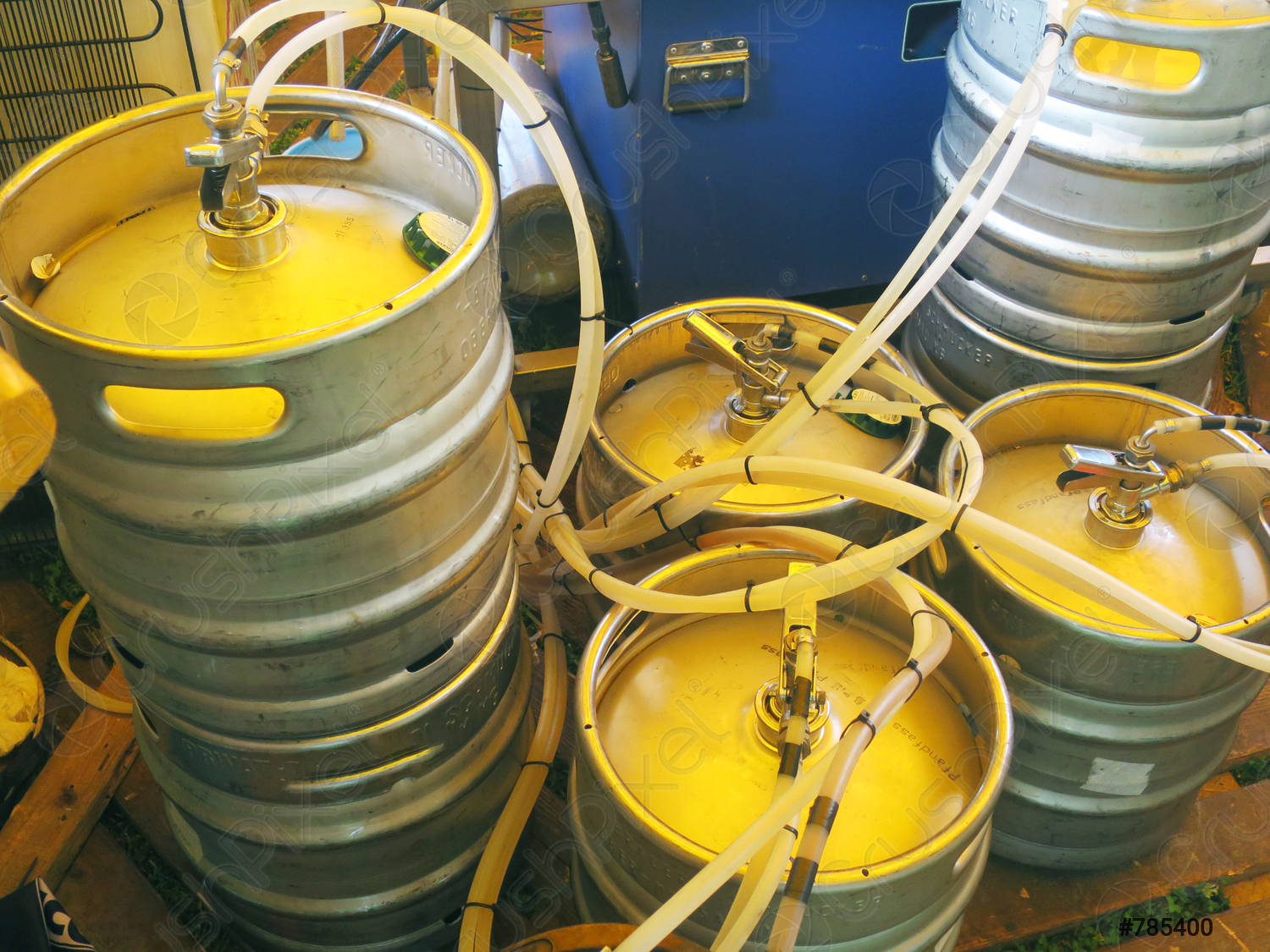
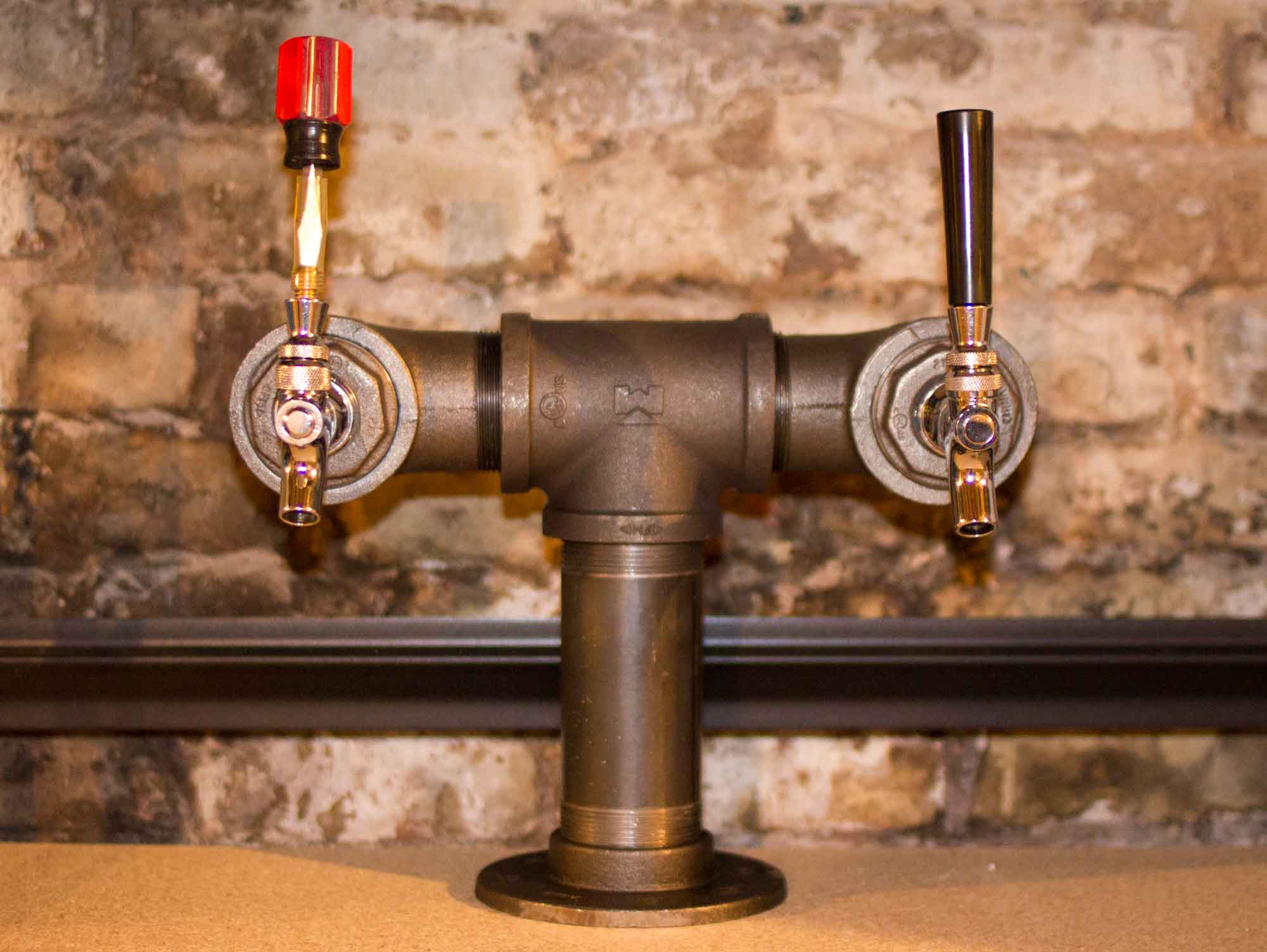
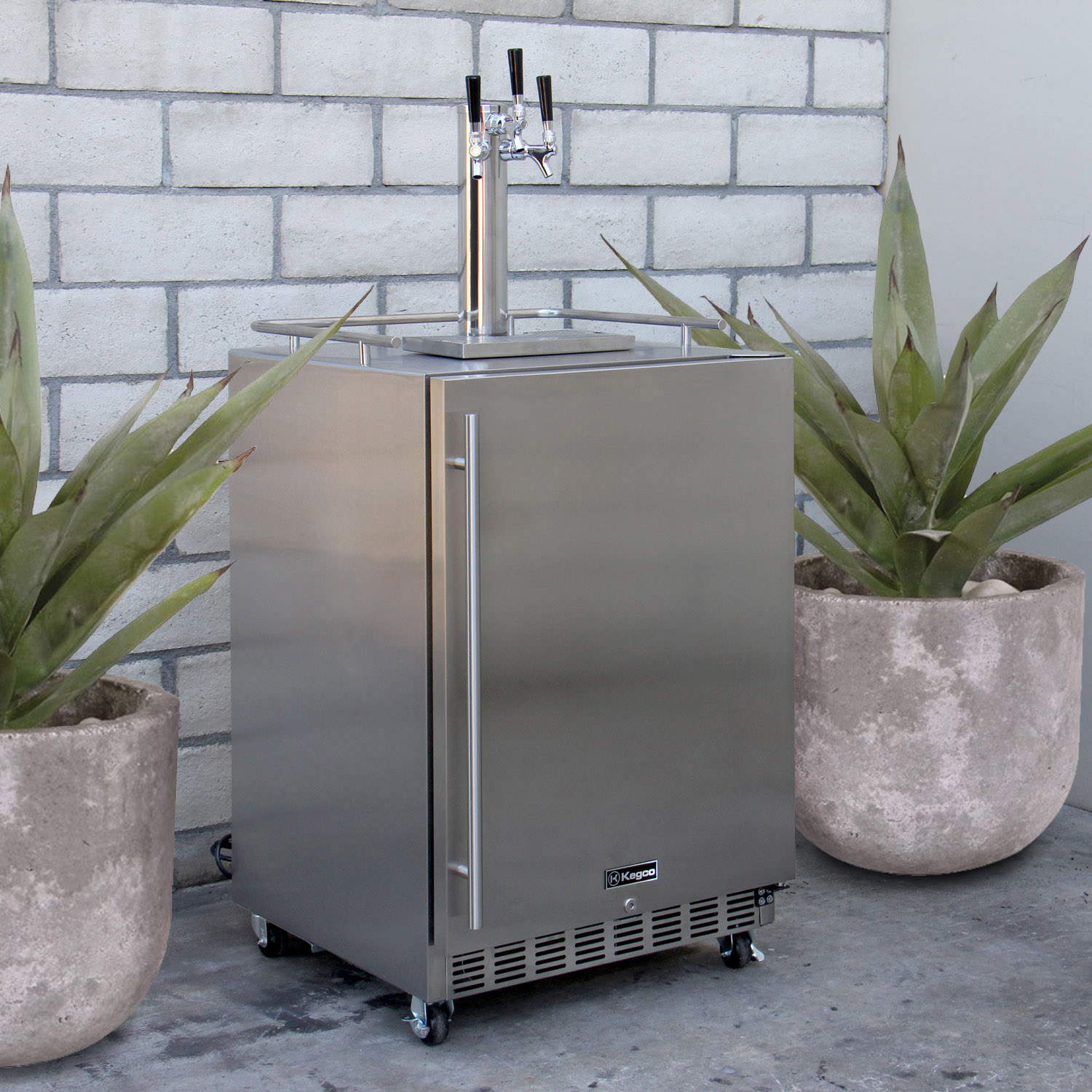
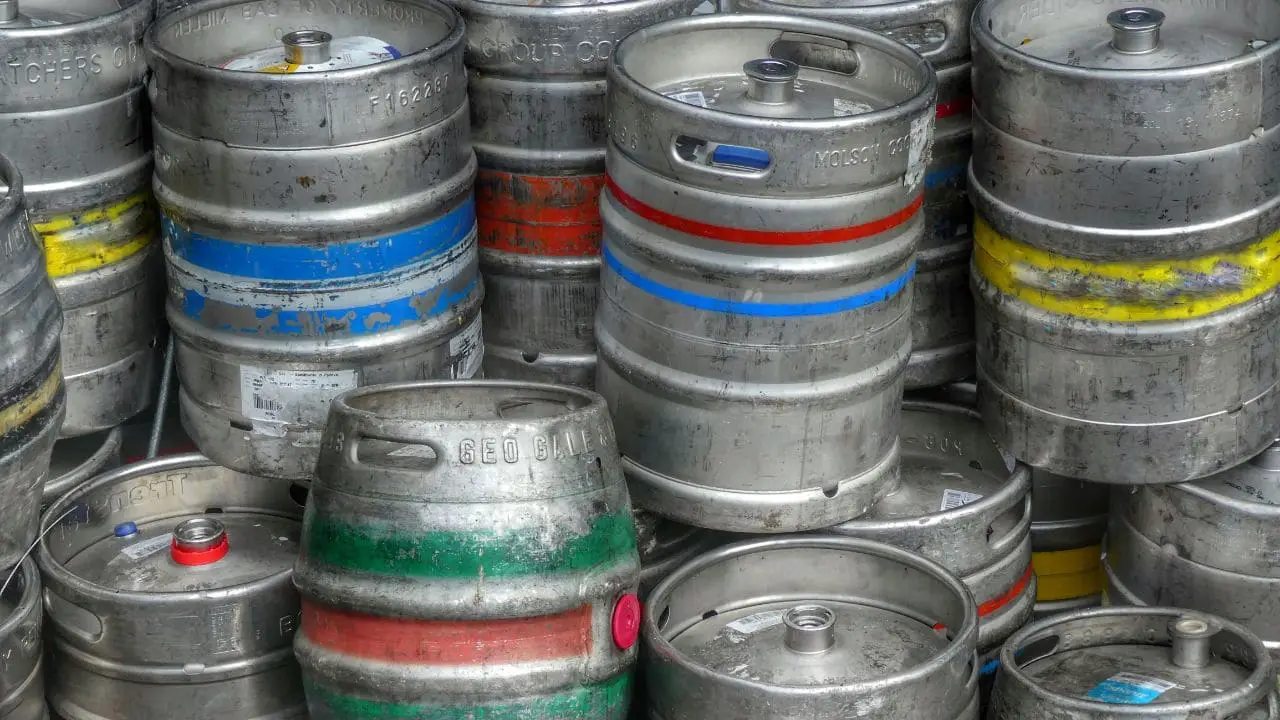

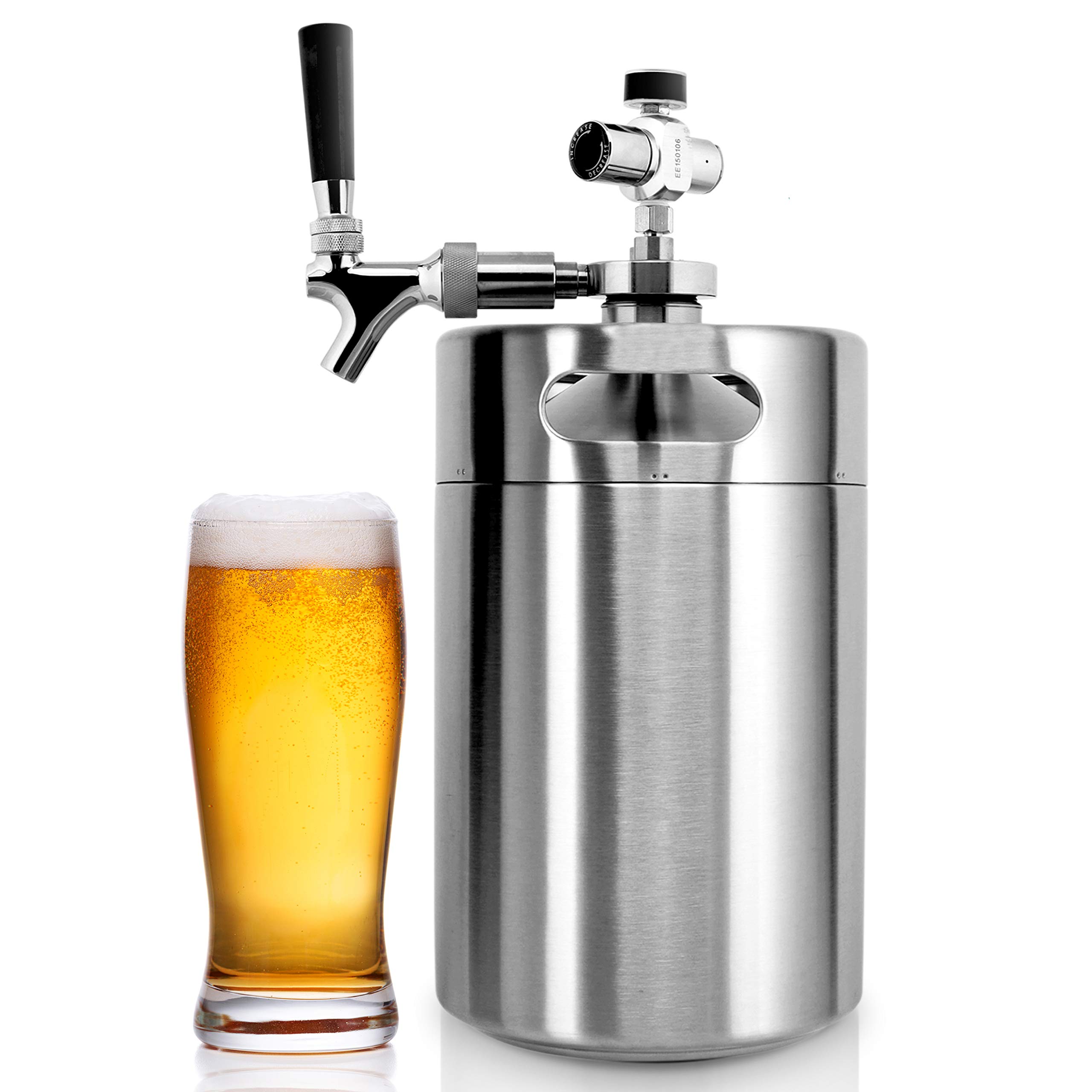
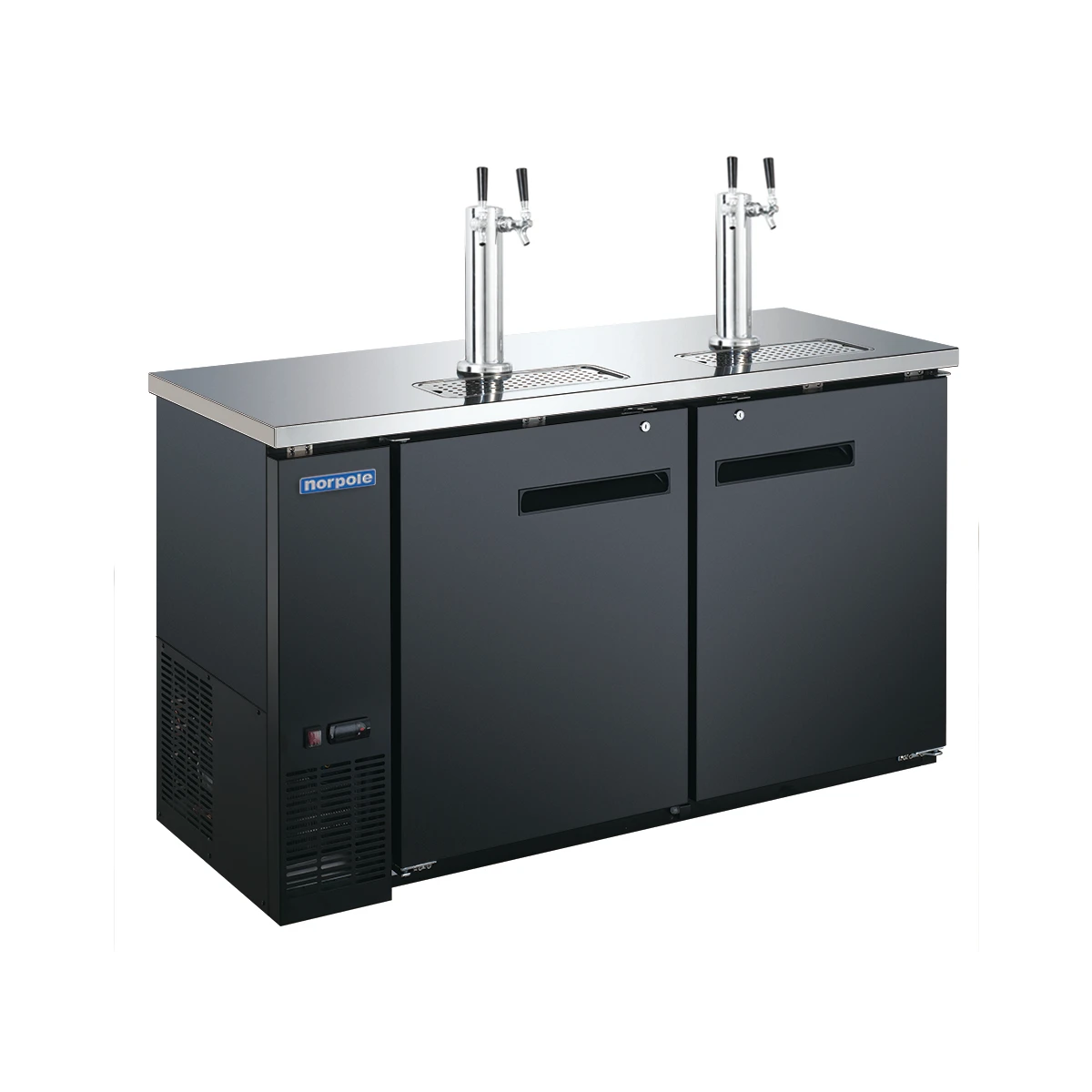
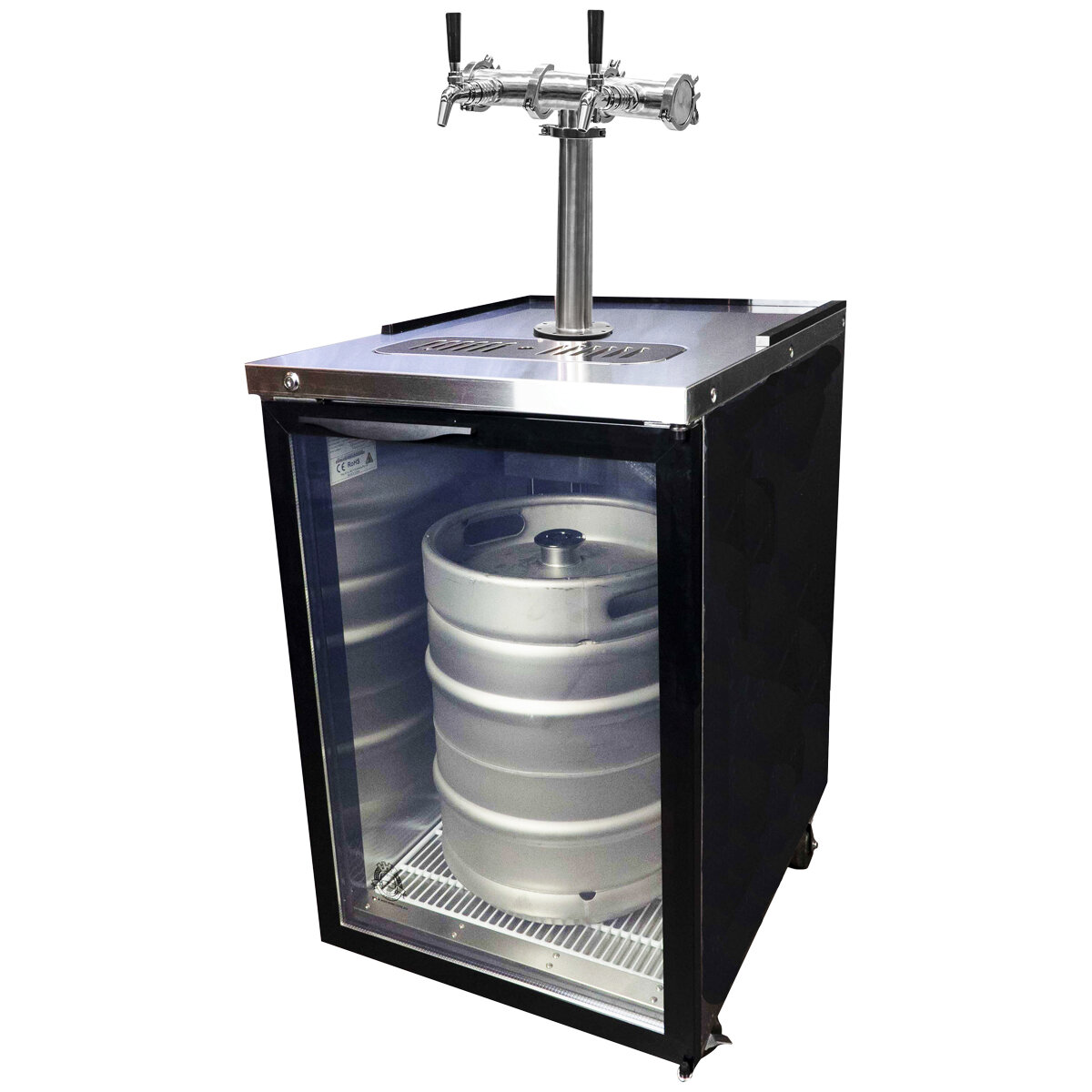
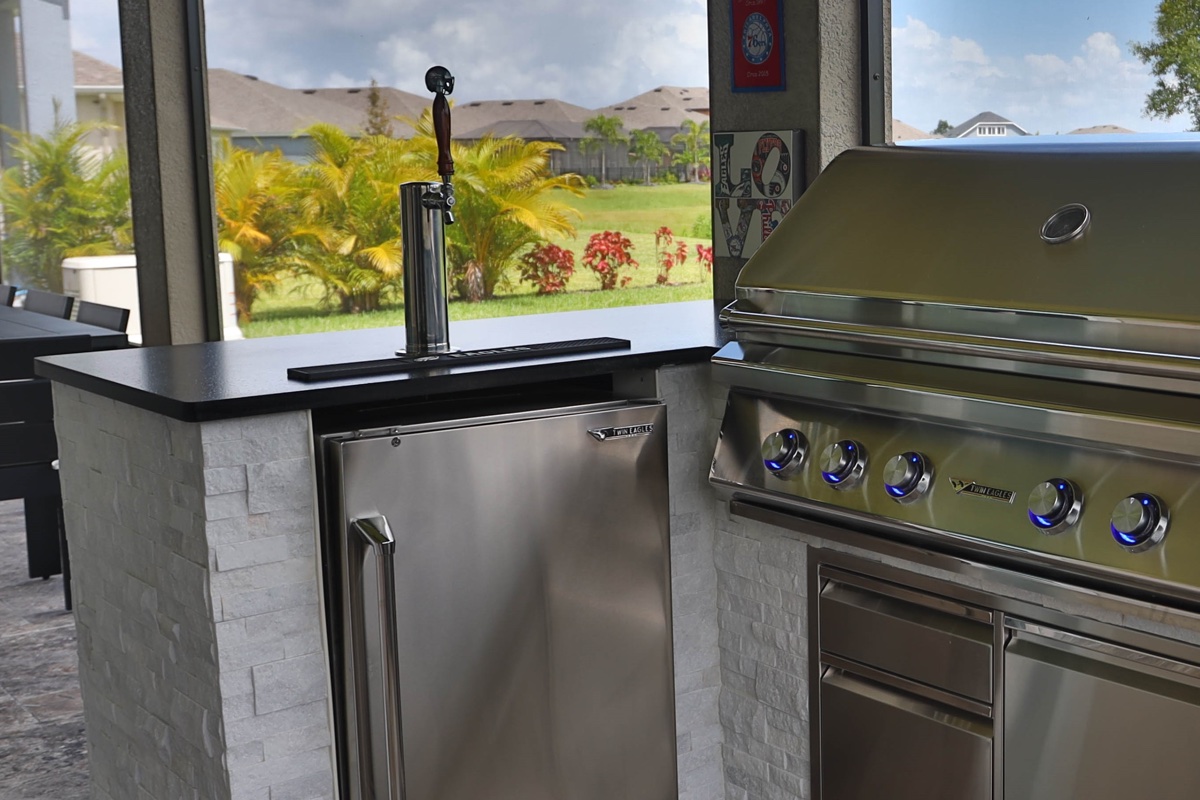
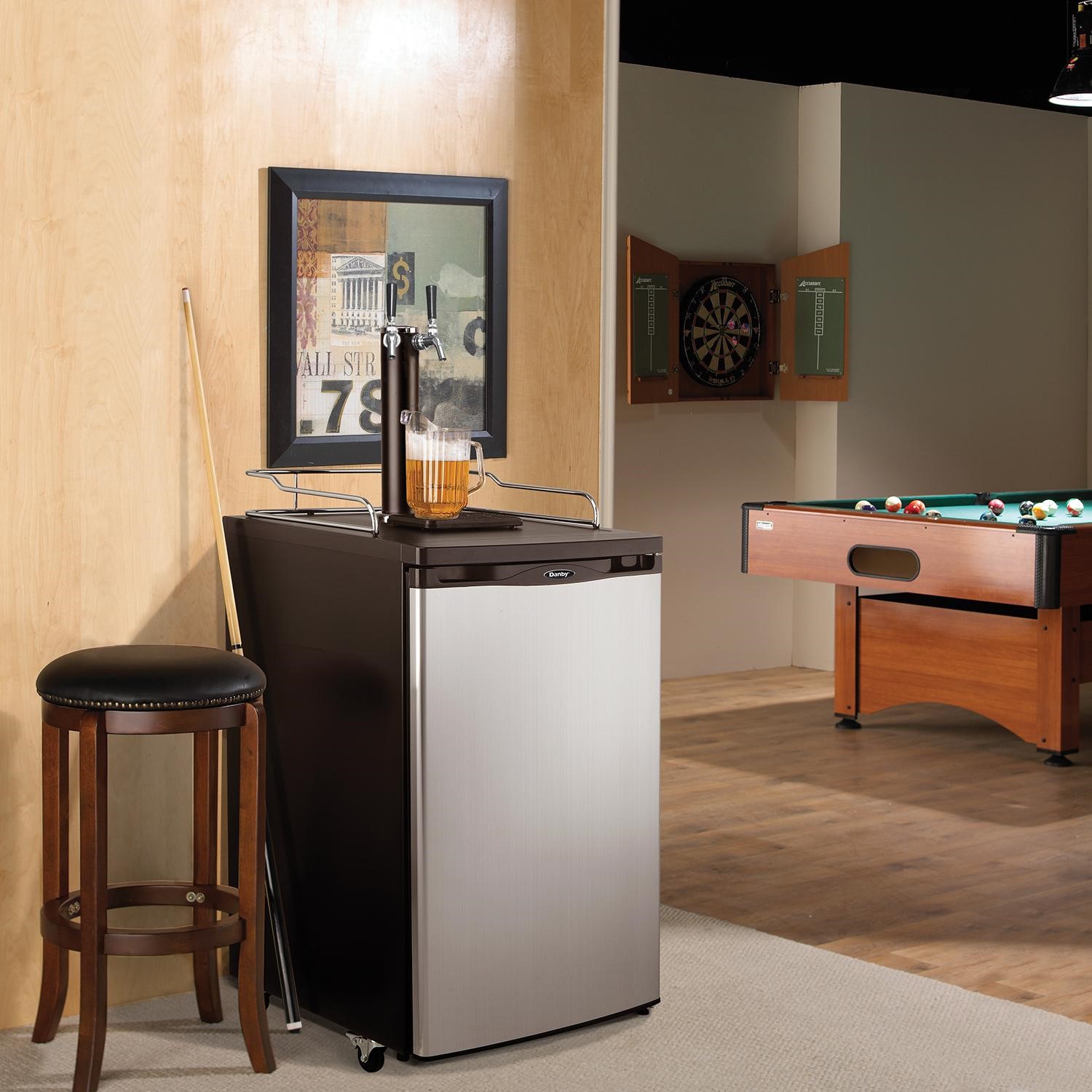


0 thoughts on “How Many Kegs Fit In A Kegerator”